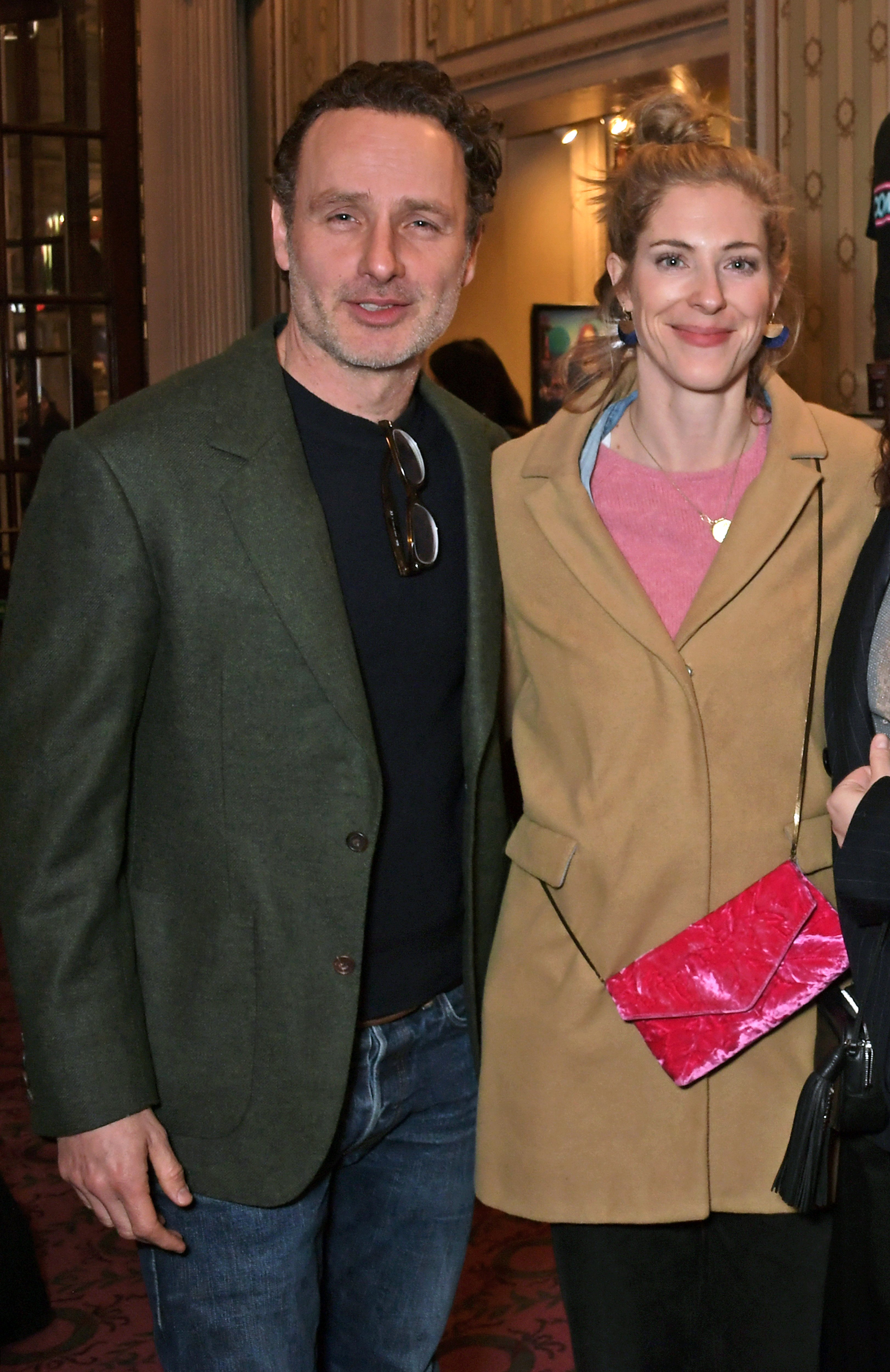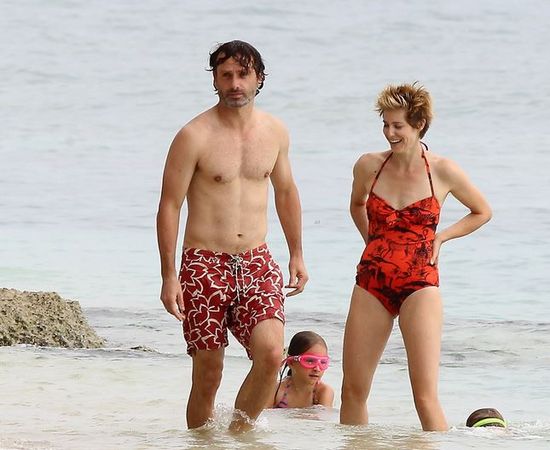Gael Anderson: What Did Ancient Gaels Really Look Like?
Have you ever stopped to wonder about the faces of people from long, long ago? It's a rather fascinating thought, isn't it? When we think about groups like the ancient Gaels, Britons, or Picts, a name like "Gael Anderson" might just spark a curiosity about their past, and what they truly looked like. We often picture them in our minds, perhaps from stories or old drawings, but how accurate are those images, really? It's almost like trying to piece together a very old puzzle with many missing pieces.
For those of us who enjoy history, or perhaps even wonder about our own distant family lines, the question of ethnic distinctions from thousands of years ago can be quite compelling. Were these groups, like the Gaels, truly distinct in how they appeared? Could you have told a Gael from a Briton or a Pict just by looking at their face, their height, or other physical characteristics? It’s a question that, in some respects, seems simple, yet proves quite tricky to answer.
You know, preliminary research on this topic often leaves us wanting more. It's not always easy to find clear-cut answers about the shared physical traits of these ancient peoples. This quest for understanding, sparked by a name or a historical period, truly highlights how much we still have to learn about the human story from centuries past.
- Girth Master And Mia Z A Deep Dive Into Their Journey And Impact.linkmaz
- Tim Scott First Wife.linkmaz
- Billie Eilish Nude Real.linkmaz
- Tamilblasters New Link 2024 Your Ultimate Guide To Tamilrockers Alternatives.linkmaz
- Molx Pro The Ultimate Solution For Your Digital Needs.linkmaz
Table of Contents
- The Puzzle of Ancient Ethnic Distinctions
- The Challenge of Knowing for Sure
- Modern Insights and Lingering Questions
- Frequently Asked Questions (FAQs)
The Puzzle of Ancient Ethnic Distinctions
When we talk about ancient groups like the Gaels, Britons, and Picts, a big question often pops up: did they all belong to the same ethnic group, perhaps broadly considered Celts? This is a point of much discussion among historians and archaeologists. While the term "Celt" is often used to describe a wide cultural and linguistic group across Europe, it doesn't automatically mean everyone within that umbrella looked the same or even felt they were part of one big family, you know?
Gaels, Britons, and Picts: Were They Truly Different?
For those who don't quite understand what "ethnically distinct" means in this context, it basically asks if these groups could be distinguished by shared physical characteristics of face, height, or otherwise. Did a Gael look like a Briton or a Pict? This isn't just about language or culture; it's about whether there were noticeable, perhaps even inherited, physical differences that set them apart. It's a subtle but important distinction, isn't it?
Imagine trying to pick out someone from a crowd based only on their appearance, knowing only their group name from thousands of years ago. It’s a pretty tough ask, even today with all our modern tools. Historical accounts are often biased or focus on cultural markers rather than detailed physical descriptions. So, finding solid evidence for distinct physical traits among Gaels, Britons, and Picts is, you know, quite a challenge.
- Prank Goes Wrong Honeytoon Free Read.linkmaz
- Vegamovies St Your Ultimate Destination For Streaming Movies.linkmaz
- Vegamoviesms Your Ultimate Destination For Movie Entertainment.linkmaz
- Filmyfly2025.linkmaz
- Melanie Jolys First Husband A Comprehensive Look Into Her Early Life And Relationships.linkmaz
Seeking Physical Clues from the Past
Trying to find anything relevant from preliminary research about these specific physical distinctions often comes up short. We might find archaeological evidence of different burial practices, art styles, or even settlement patterns, but these don't necessarily tell us about facial features or typical height. It's like finding a person's house and their favorite pottery, but having no photo of them, you see.
Sometimes, we try to use skeletal remains to infer physical traits, but even that has its limits. Bones can tell us about height and general build, perhaps even signs of certain diseases, but they rarely give us enough detail to reconstruct a face with any real certainty, especially to distinguish between closely related populations. It’s a very complex area of study, to be honest.
The Challenge of Knowing for Sure
By and large, we really don't know the precise physical distinctions between these ancient groups with much certainty. This lack of definitive information can be a bit frustrating for those who love clear answers, but it's also a testament to the passage of time and the nature of historical evidence. It’s simply a reality of studying such distant periods, you know, that some questions remain open.
Why Historical Records Fall Short
Ancient texts, when they exist, often describe people in very broad strokes, focusing on their customs, their battles, or their leaders, rather than on detailed physical descriptions that would help us tell one group from another based on appearance. A Roman writer might mention a "barbarian" tribe, but they rarely offer a precise description of their typical facial structure or hair color, for example. They just didn't record things in the way we might wish they had, as a matter of fact.
Even when physical traits are mentioned, they are often stereotypes or used to emphasize differences in a way that isn't scientifically reliable. So, relying solely on these old writings for a clear picture of how a Gael looked compared to a Briton or a Pict is, well, pretty much impossible. It’s a big hurdle for historians and anthropologists, actually.
The Role of Neolithic Societies in Shaping Populations
It's also worth remembering that populations change over time. Neolithic (farming) societies, for instance, supported an order of magnitude larger populations than the hunter-gatherer groups that came before them. This means more people, more movement, and more mixing of genes over thousands of years. So, even if there were distinct physical traits at one point, they could have blurred significantly over generations due to migration and intermarriage.
The spread of farming techniques and new technologies brought waves of people into different regions, changing the genetic makeup of populations in ways we are only just beginning to fully understand through modern DNA analysis. This constant ebb and flow of people means that pinning down a single "look" for a group like the Gaels across centuries is, quite simply, a very complex task. It’s a dynamic picture, you see.
Modern Insights and Lingering Questions
While traditional historical and archaeological research has its limits on this topic, modern genetic studies are starting to shed some light on ancient population movements and genetic relationships. DNA extracted from ancient human remains can sometimes tell us about ancestry, hair color, and eye color, offering new clues. However, even these studies provide broad strokes, not the fine details of individual appearance that would let us easily distinguish a Gael from a Briton from a Pict just by looking.
The quest to understand the physical appearance of ancient groups like the Gaels, Britons, and Picts remains a fascinating area of study. It reminds us that history is not always a book with clear answers, but rather a series of questions that we continue to explore with new tools and fresh perspectives. It’s a pretty compelling mystery, really, and one that continues to capture our imagination even today, on this very day, .
To learn more about the broader context of ancient Celtic peoples, you might find some interesting information on academic sites, such as those dedicated to archaeology or historical studies. For example, a good starting point could be the Archaeological Institute of America, which often features articles on ancient European populations. You know, it's always good to check out reputable sources.
Learn more about ancient history on our site, and link to this page here for further reading.
Frequently Asked Questions (FAQs)
Were Gaels, Britons, and Picts ethnically distinct?
While they had distinct cultures, languages, and geographical areas, determining if they were "ethnically distinct" based purely on shared physical characteristics is very difficult. There's no clear evidence from historical or archaeological records to say they looked noticeably different from one another across the board, you know.
What physical characteristics defined ancient Gaels?
Honestly, we don't have enough specific information to define the typical physical characteristics of ancient Gaels, such as their average facial features or specific hair and eye colors. Most of what we "know" is often based on broad generalizations or later artistic interpretations, which aren't always accurate, you see.
How much do we know about the appearance of early European groups?
By and large, our knowledge about the precise physical appearance of early European groups is limited. While skeletal remains can offer some clues about height and general build, detailed facial features or distinctions between closely related groups are largely unknown from the available historical and archaeological records. Modern DNA studies are starting to provide new insights, but it’s still a developing field, you know.
- Ikura De Yaremasu A Comprehensive Guide To Understanding And Mastering The Concept.linkmaz
- Aagmal.linkmaz
- Hdhub4u 2025 Hindi Dubbed Your Ultimate Guide To Streaming Movies.linkmaz
- Sophie Rain The Rising Star Of Spiderman Erome.linkmaz
- What Happened To Dustin Hurt.linkmaz

Andrew Lincoln’s Wife Gael Anderson Is the Daughter of a World-Famous

Everything About Gael Anderson - The Wife of Andrew Lincoln and

Who is Gael Anderson? All About Andrew Lincoln's wife - citiMuzik